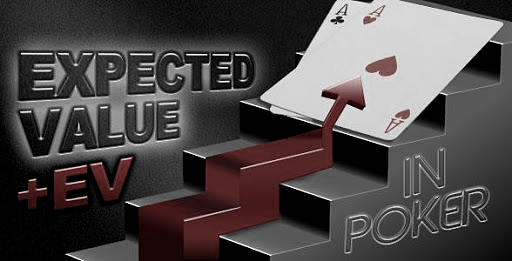The expected value is the average benefit of a given poker action. If it is positive, then the move will lead you to victory. In this article, we'll just talk about a tricky poker term.
Poker and math
A lot of poker players ignore math, but in vain. Not everyone is given to be venerable professionals who can ride on one intuition, which means you need to pump the skill.
Whatever one may say, but in poker everything is built around mathematics, and therefore any player who wants to consider himself strong should apply it correctly. Along with the psychological flair, this will make him a top-class professional. It often happens that professional players wondered how the course of the game could have turned out if they had not used mathematical calculations. Math may not be necessary at micro stakes, but if you want to play seriously and win big, you can't do without it.
Through the use of poker math, you can:
- calculate the probability of starting / against opponent's hands;
- guess what hands can arise during the game;
- calculate outs and odds;
- assess the odds of the bank;
- use bluffs correctly and in time;
- use game theory for successful predictions.

Expected value
Correct assessment of the situation at the table and careful analysis are two main criteria for success in poker, which are guided by all competent poker players. The mathematical expectation is the most important component here. In English, it is called Expected Value (which means the expected benefit) and is abbreviated as EV. So, a positive mathematical expectation will be EV +, and a negative one will be EV-. As you might guess, a positive sign means a victory for you, and a negative sign means a loss. We are now talking about a higher probability. In a single hand, you can win with a negative EV and lose with a positive EV, but in the long run, only a positive EV will win.
How to calculate the expected value
So how do you calculate EV? The formula for such a mathematical calculation will look like this: EV = V x Pwin - L x Plosewhere:
- V is the possible win.
- Pwin is the probability of winning.
- L - possible loss.
- Plose - the probability of losing.
For comparison, here's an example of a coin toss. We can assume that heads and tails can come up in equal chances - either heads or tails, so the possible loss is ½. Let's set a conditional rate - 1$. If heads fall, the bet will win, tails will lose. Substituting the values into the formula, we get the following calculation: EV = 1 x ½ - 1 x ½ = 0.
It turns out that with equal chances of winning and losing, the mathematical expectation becomes meaningless. But what if the heads up gives 1.2$ and the tails loss is still 1$? In this case, the formula will be different - EV = 1.2 x ½ - 1 x ½ = 0.1, and now we get a positive value of EV.
You can apply this formula to your own rates and values. Just choose the rate at which the expected benefit will be positive and you will be the winner.

As you can see, poker math is actually not that difficult. Adopt the formula, calculate the mathematical expectation of your bets and play more successfully!


